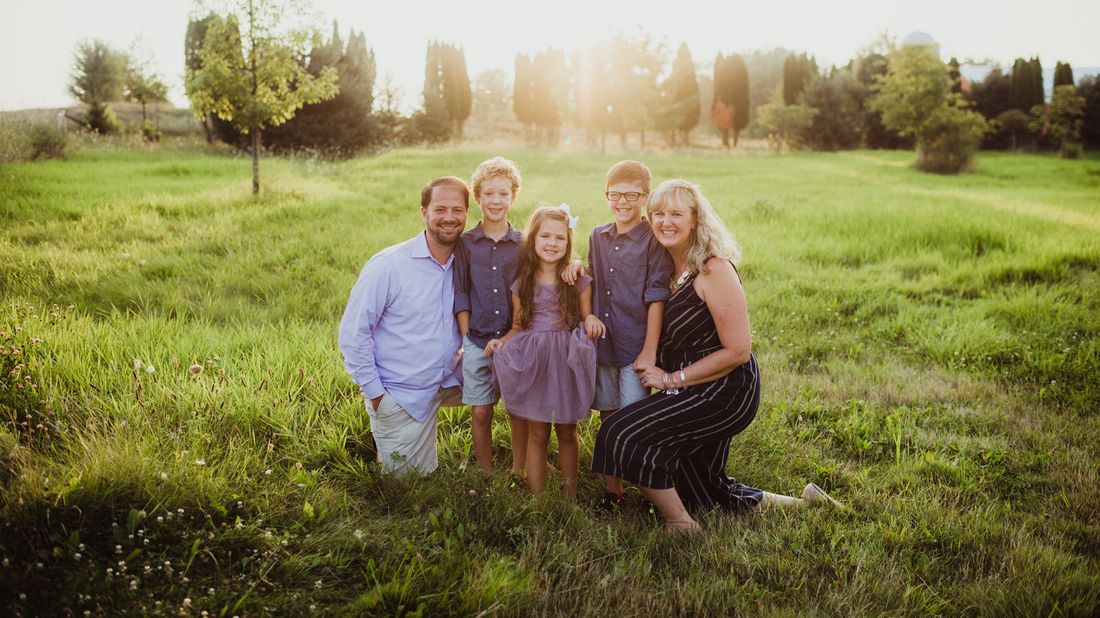Why Buy Life Insurance for Your Kids?

Buying life insurance on a child is crazy! That was my reaction when someone tried to sell me a policy for my son years ago, before I worked for a company that sells life insurance.
Today, my wife and I have life insurance on each of our three children. Why? Because I write about this stuff every day. And the more I learned about how life insurance works and its role in financial planning, the more I realized that it’s crazy not to buy life insurance on your child. My wife agrees—I’ve been known to talk about these topics at home.
Several years ago, we bought a small Northwestern Mutual whole life insurance policy for each of our kids. I know what you’re thinking, but no, employees don’t get a deal on our life insurance. We pay what you’d pay. Each child started with a $50,000 death benefit (it has gone up each year because we have opted to have dividends on the policies used to purchase additional insurance).
Here’s why we bought life insurance for our children, and why you should too.
The benefits of buying life insurance for kids
1. The death benefit
To be clear, we don’t want the death benefit. If we ever actually collected it, it would be helpful at a time that would be so awful that I can’t even imagine it. But that’s not why we did it.
Someday, we hope our children get married and have families of their own. At that point, they will likely want insurance on themselves. $50K will be a nice starter policy. But what we’re really doing is protecting their ability to buy more insurance should something happen that would cause the price to be expensive for them. This is a concept our industry calls insurability. Say one of our kids is diagnosed with diabetes. In such a case, they probably wouldn’t qualify for most life insurance. If they did, it would be incredibly expensive.
The policies that we bought for our children feature an optional benefit that will give them the ability to buy more insurance at set times in the future based on their health at the time that we took out the insurance—they were very healthy 5-, 3- and 1-year-olds. Even though any additional insurance would be more expensive—because age is also a factor in the cost when a policy is purchased—changes to their health won’t impact the price. We have insured their ability to get more insurance for years. This was key for us.
I still remember a brief health scare we had with our middle child a couple years ago (it turned out to be nothing). But while it was ongoing, my wife asked, “he’s taken care of, he’d be able to get more insurance, right?” “Yes,” I said. It was amazing peace of mind.
2. Cost
The cost of life insurance is based primarily on your age and health. We’ve already established that we were blessed with healthy kids. They were also very young when we bought their policies. Each of their policies costs between $30 and $40 each month — far less than we put in their 529s each month. The amount we pay for each will never increase unless they buy more insurance. By the time we hand the policies (and hopefully the cost of them) to the kids, it’s likely to be one of the lowest bills they will pay each month. And by then, most of that cost will go right to the policies’ cash value.
3. Cash value
In addition to the death benefit, with whole life insurance, you also accumulate cash value. Over time, our kids’ policies could be worth a significant amount—eventually tens of thousands of dollars. And with the type of policies they have, once the money is there, the value won’t go down unless they take it out.1 They could use the money for college, a down payment on a home or emergencies. But I kind of hope they keep it, and their insurance all the way to retirement. The stable cash value of life insurance can be a great supplement to retirement income—something that you could tap in down market years (because it won’t decline with the market).1
Here's what's happened to the life insurance policies for our kids since we bought them
Each year, the policies’ death benefit and cash value has increased. Today, nearly nine years after we first purchased them, they have death benefits between $58,400 and $60,900 (each is a little different because of how the policies work). Together, the three have accumulated a cash value of more than $6,100.
Could we have saved more by just investing the money? Sure. And we do that too for the kids in their 529 accounts. But the stable cash value is a great side benefit that comes along with our decision to make sure our kids will have life insurance and the ability to get more when they need it.
Should you buy life insurance for your child?
Of course, every parent will have different ideas for how to help secure their children’s futures. For me and my wife, getting life insurance policies on our children has helped us jumpstart protecting their finances into the future. But if you’re still on the fence, consider talking with a Northwestern Mutual financial advisor to see if this makes sense for you and your family.
Photo courtesy of Sarah Vanessa.
1. It’s important to keep in mind by taking cash value out of the policy, there could be a reduction in the death benefit, impact on future dividends, or possible taxable gains.
Related Articles
Feel better about taking action on your dreams.
Your advisor will get to know what’s important to you now and years from now. They can help you personalize a comprehensive plan that gives you the confidence that you’re taking the right steps.
Find your advisor

Want more? Get financial tips, tools, and more with our monthly newsletter.

6 Reasons to Buy Life Insurance for Your Children

Life Insurance Guide

How Much Do You Know About Life Insurance?

What All New Parents Should Know About Life Insurance

What New Parents Need to Know About Their Finances




